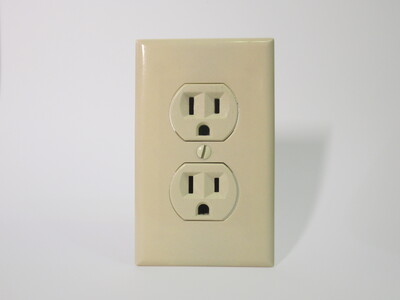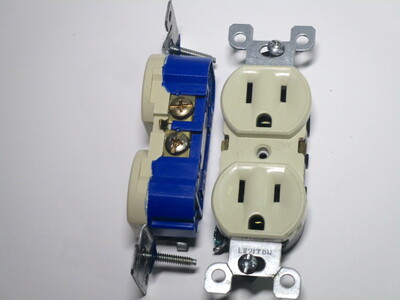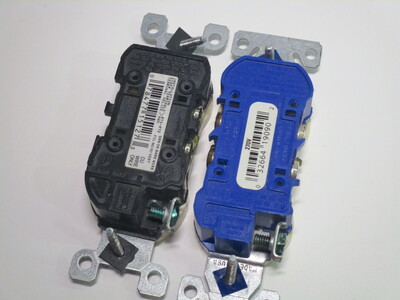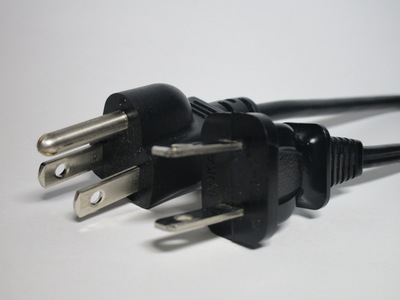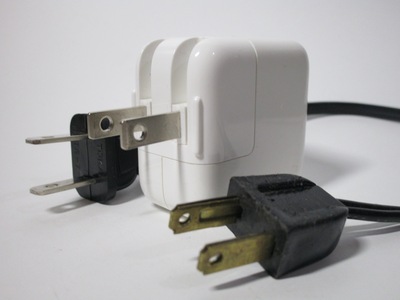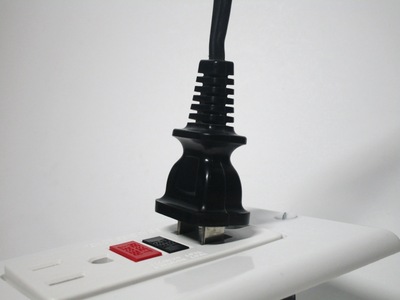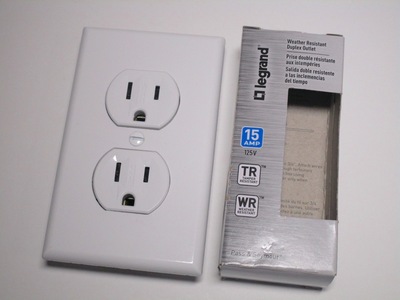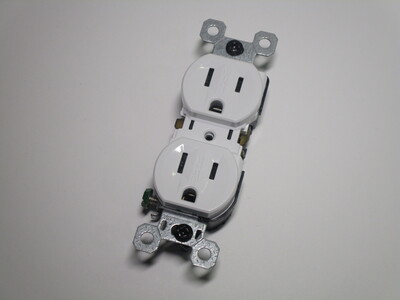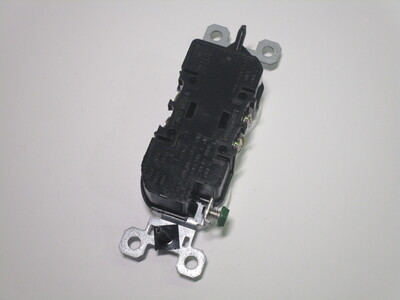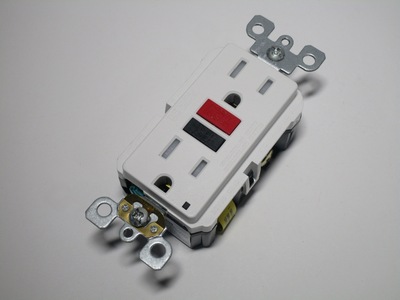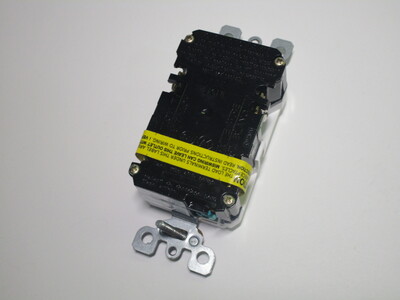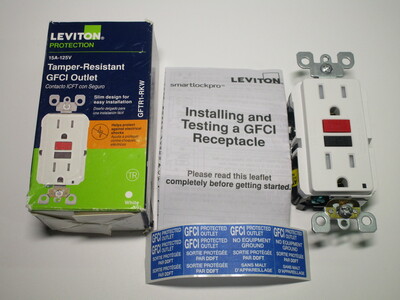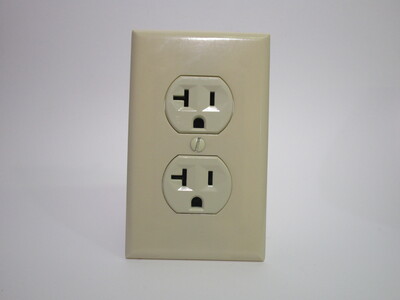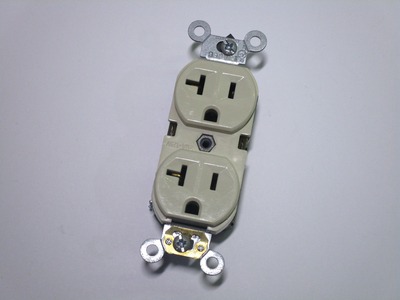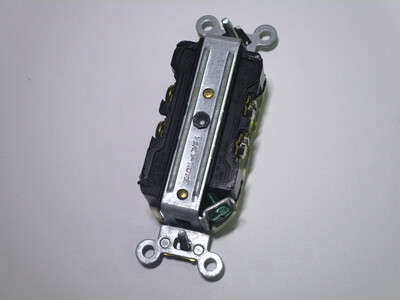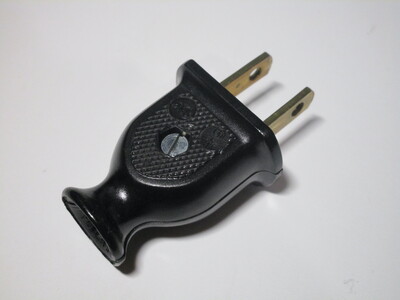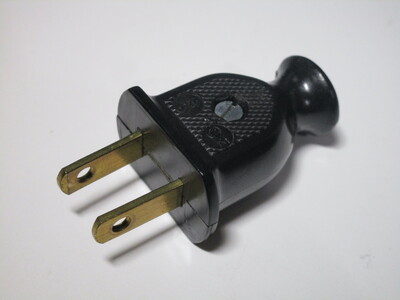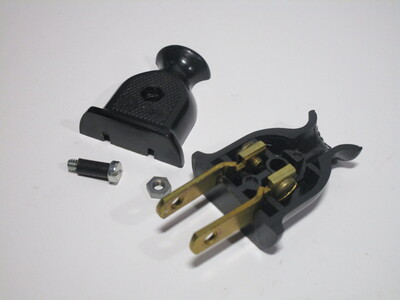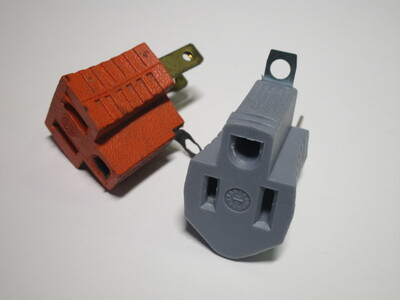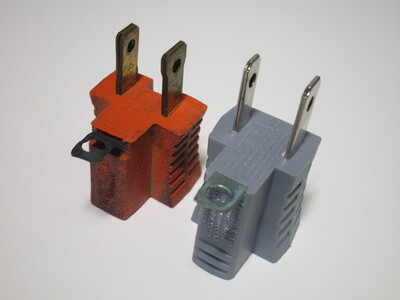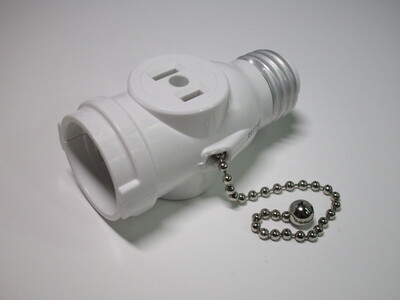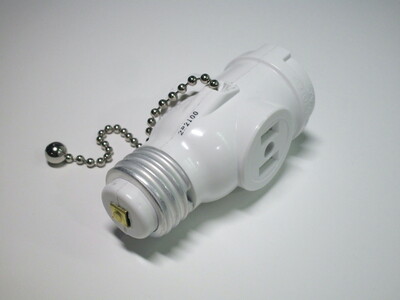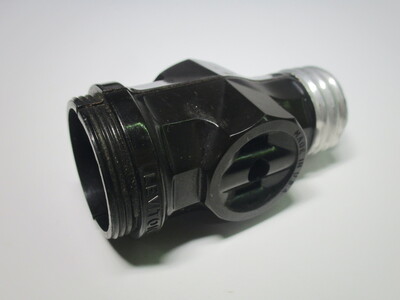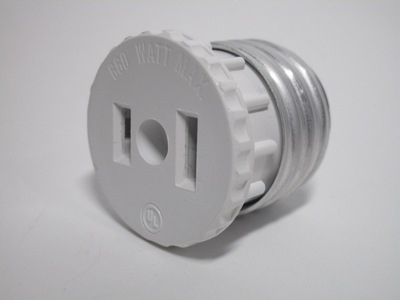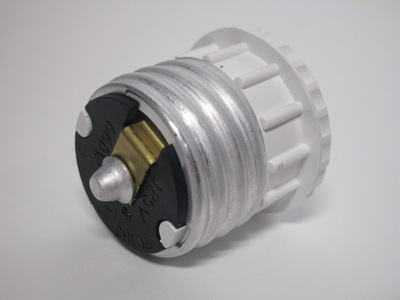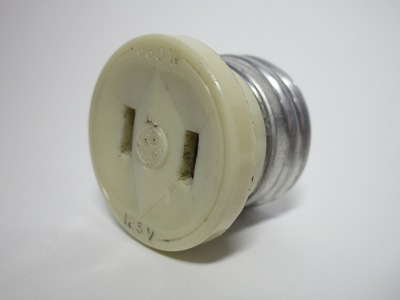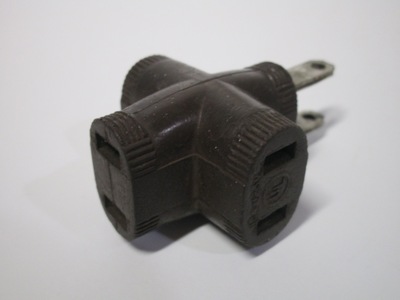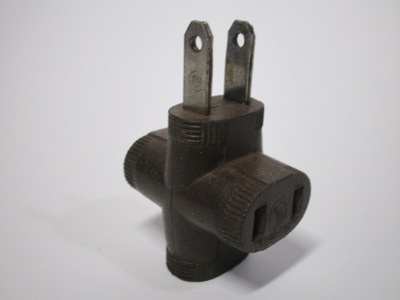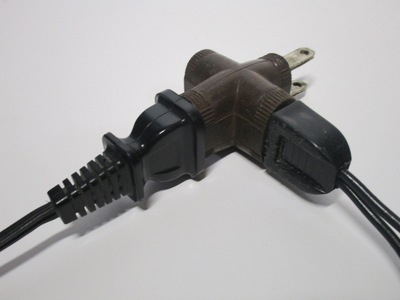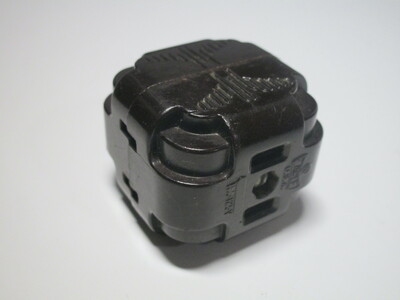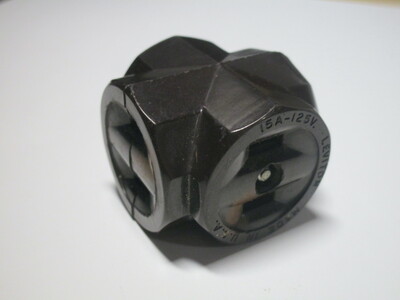North American plugs and sockets
The North American plug standard is the oldest one in the world, being initally developed by Hubbell. These plugs are nowadays found in North and Central America, Brazil and large parts of Asia, though often at different voltages and frequencies.
Standard American power socket
Rating: 15A 125V
These are two NEMA 5-15R power sockets, as found in most electrical installations in North America. Most of them are duplex receptacles, that is, they have two outlets in one single item. They're mounted to a rectangular wall box using two screws on the top and bottom, which are retained using a simple mechanism to avoid losing them.
The faceplate is of the "classic" style, with two circular cutouts for the sockets and a single, fairly short, flat-head screw holding it to the receptacle. Once this cover is removed care must be taken, as the terminals present on the side aren't shrouded and are thus very easy to touch.
Wiring these outlets can be done in one of two ways: the best, and recommended, method is to use the screws to the side. The wire is bent in a circular shape using some pliers, and is then placed around the screw which is then tightened, forming a good connection. There are also side tabs present which can be removed to wire the two outlets independently, for example to use one with a light switch.
The second, and worse, method is to use the push-in slots ("back-stabs") present on the back, which take less time to use but offer a considerably worse connection, and are thus discouraged. Some higher-end outlets use rising clamp terminals like on European sockets, but this isn't common on standard ones.
Standard 2- and 3-prong plugs
North American plugs have two flat blades for line and neutral, as well as a round earth pin on earthed plugs. The non-earthed version is known as NEMA 1-15P, and can be either polarised or non-polarised; polarisation (that is, being able to distinguish between line and neutral) is achieved by having a slightly larger neutral slot, which then only allows the plug to fit in one way. Earthed plugs (NEMA 5-15P) are always polarised, and thus generally use pins of the same width.
While very compact, them main disadvantage of this design is the ability for someone to accidentally come in contact with a live pin while connecting or disconnecting the plug and receive a shock. This is especially an issue with old plugs, as they often have a very small body. Newer ones tend to have a better grip to help prevent this from happening.
Tamper-resistant (TR) socket
Rating: 15A 125V
In the last few years, sockets with safety shutters have become mandatory for new and renovated installations. These outlets, which are referred to as "tamper resistant" (TR), work and are built the same as normal ones, but they have shutters, which only open when two pins of a plug are pushing into them. This helps prevent people from sticking metal objects into a socket and receiving an electric shock.
Adoption is at the moment somewhat slow, as these are only really found in newer installations and non-TR sockets are still found in the majority of houses, can still often be bought at hardware stores, and aren't required (and thus generally never found) on things like power strips and extension cords.
GFCI-protected outlet
Rating: 15A 125V (20A feed-through)
This GFCI-protected power outlet, commonly referred to just as "a GFCI", features built-in protection against leakage currents. A GFCI (or RCD in Europe) protects people from shocks by detecting a difference between line and neutral. If this exceeds a certain amount, in this case 5mA, the device trips and disconnects the power.
Compared to most European countries, in North America it's generally only common to see this form of protection in "wet" areas such as bathrooms and kitchens. Additionally, it's almost always found in the sockets themselves, rather than on the breaker panel.
This device features two outlets (with shutters) for connecting devices, as well as "load" terminals to hook up other sockets, which will also be protected. "Test" and "Reset" buttons are present on the front, for checking the correct operation of the GFCI and turning the power back on when it has tripped.
20A power socket
Rating: 20A 125V
NEMA 5-20R outlets are generally found on 20A circuits in commercial applications, for appliances that may require more power than an ordinary outlet can provide. Aside from 20A plugs, they also allow the use of conventional 15A two- and three-prong ones, thanks to a T-shaped neutral slot.
It should be noted that, while 20A circuits are common in household installations, 20A sockets generally aren't, as the electrical code allows the use of (cheaper) conventional 15A outlets and there are few appliances - aside from special use cases - that require them.
Vintage bakelite plug
Rating: 15A 125V
This is an old 2-prong (unearthed) NEMA 1-15P plug, made of two identical piece of bakelite to save cost. As common with old plugs of this style, it's not polarised, which means it can be inserted in either direction.
It's interesting to note that this plug was actually made in Italy, though the UL and CSA markings indicate that it was clearly meant for the export market.
Ground defeater adaptors
Rating: 15A 125V
These adaptors convert a two-prong (non-earthed) outlet into a three-prong one, with a tab meant to the used for the earth connection. In theory, this is supposed to only be used with a 1-15P socket installed in a grounded wall box: the tab would connect to the screw holding the faceplate and thus would make it possile to connect earthed devices safely.
However, in practice, these are almost always just used to bypass the earth connection entirely, in houses that lack 3-prong outlets. It's a very well known practice, and it's likely that the official purpose of these adaptors is just an excuse to continue to legally sell them.
Edison lamp socket adaptors
Rating: 15A 125V
The adaptors shown here connect to a normal lampholder and convert it to two 2-prong power outlets, to plug in standard electrical appliances in situations where an outlet may otherwise not be available. The larger ones also feature a pass-through lamp socket for a lightbulb, and the later model also has a pull-cord to switch it on or off.
Devices like these were often used in the early days of electricity all around the world, as it was mainly used for lighting back then and thus very few power sockets were generally present in a room. However, while in Europe these adaptors haven't been made since the 50s/60s, American equivalents continue to be made nowadays, and they're still sometimes used for special applications.
There are also simpler versions of these adaptors, which only feature one outlet and are thus much smaller. Notably, all of these adaptors have a very small power rating (660W), understandable since a lamp socket isn't meant to handle a large amount of current, but there's no fuse or breaker to actually enforce this.
Note that the older versions of these items are both unpolarised and manufactured respectively by Leviton and General Electric.
Vintage non-polarised three way adaptor
This non-earthed, non-polarised adaptor allows the use of three devices on a single socket. Unpolarised outlets such as on this device are now largely useless due to the proliferation of polarised appliances, however it could still be useful for things like phone chargers.
Old multi-outlets with three sockets
Rating: 15A 125V
These are two vintage connector sockets built by Leviton and Eagle, for use at the end of an extension cord. Both of them are made of bakelite and have three non-polarised outlets on them, which is definitely indicative of their age.
A screw on the front is present, which can be removed to reveal the wire connections inside. While rewireable ones like these have definitely become uncommon, it's still possible to buy extension cords nowadays with something similar to this at the end, though obviously modern ones use polarised outlets and have a slightly different look.
